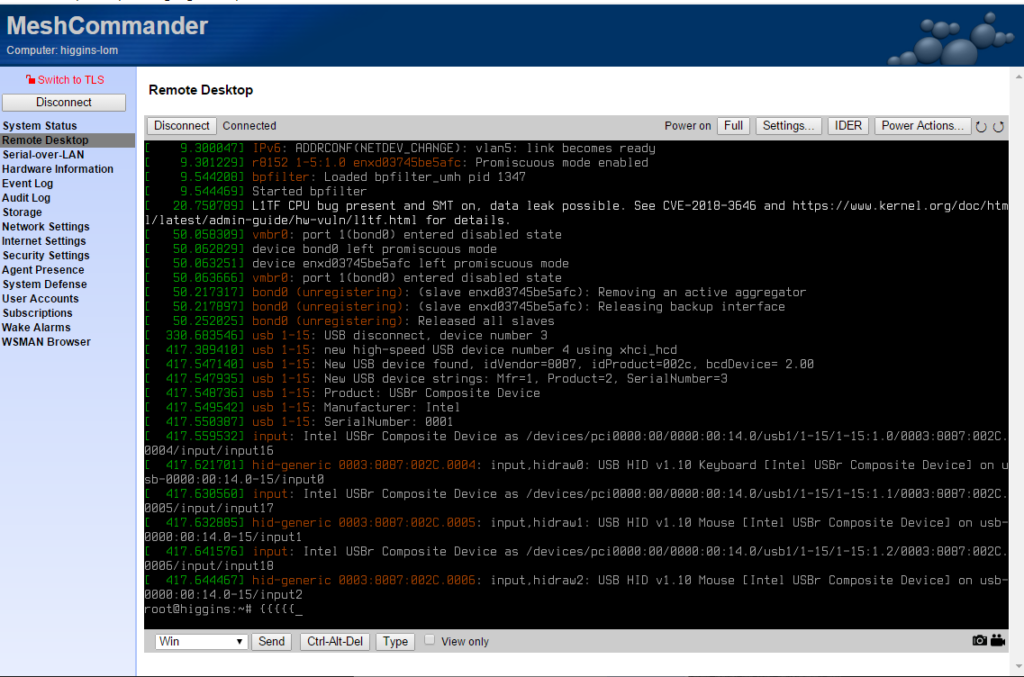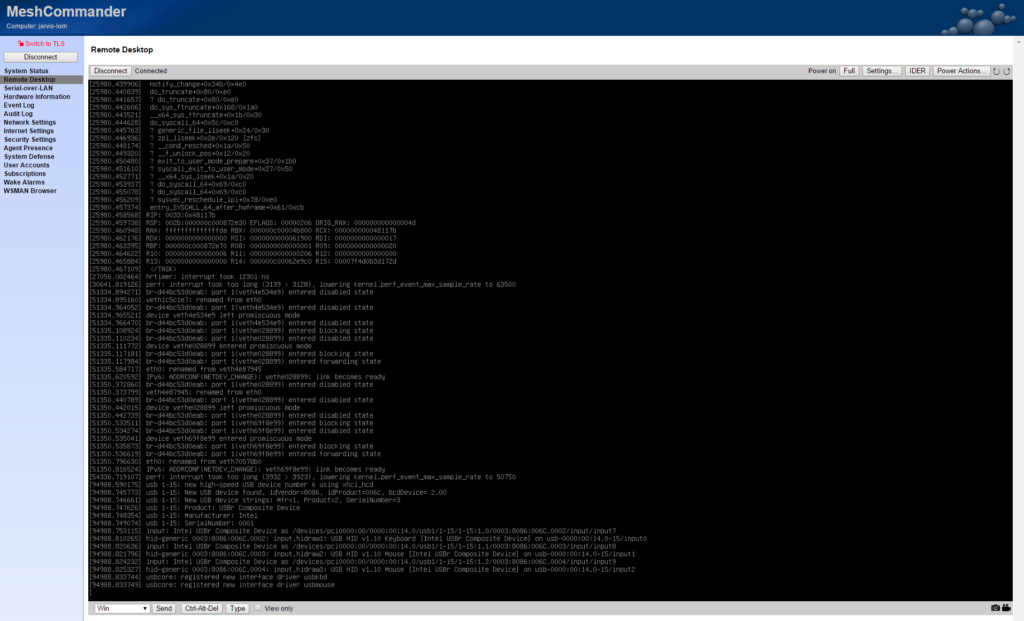No Homelab Remote KVM? Intel Chipset? No Problem with Intel’s Management Engine and MeshCommander!
Mesh Commander is an application that can communicate to the Intel Management Engine (IME) available on most systems using an intel chipset. Once IME is configured, Mesh Commander will provide an entry point into the system and can provide a whole range of options from power cycling the system, remote controlling the system, and even accessing the BIOS. So how does it work? Here are the steps I go through to enable it:
Homelab Server Setup
In the system’s BIOS, look for Intel Management Engine (IME), Enable, then reset it. Make sure “Press <Ctrl-P> to Enter MEBx is enabled.


Take note of the key combination needed during the BIOS post. On my systems, to get into the IME settings, it’s <Ctrl-P>

The initial password is “admin” – Change it to your preferred password.

Go into the network settings and either keep the DHCP settings or use static IP. This is where it gets cool. The IME IP address will be enabled on the main ethernet port of the system ALONG WITH the IP the OS ends up using. And what’s even cooler? Say you disable the ethernet device in windows; it doesn’t disable the port. The port will remain available for IME functions.




Something I had to learn the hard way. If you plan on trunking multiple ethernet ports together, IME does not understand trunking/LACP/port aggregation, so it will not communicate properly.
MeshCommander Setup
Download the Windows MSI https://www.meshcommander.com/meshcommander
Install MeshCommander on your daily driver (regular client). There are other fancy options offered, but this will get you going.
Run MeshCommander
Add your home lab server to MeshCommand by manually entering the details with “Add Computer…” or be lazy and use “Scan…”
Click on the discovered systems and modify the settings. Use the password you set up earlier on the server.
Now Connect!
What to do, what to do… Remote Desktop? YES PLEASE!
If the screen is too small, you can change the font (debian):
dpkg-reconfigure console-setup
Other Tips
I had issues where the remote desktop does not work after Linux booted up and found it was due to the graphics driver disabling the GPU if no monitor detected. I couldn’t find a graceful work-around via software so I ended up going the HDMI Dummy Plug route. It terminates the HDMI lines so the system believes a monitor is there, and preventing the GPU from shutting down. https://a.co/d/9Cx13G7









